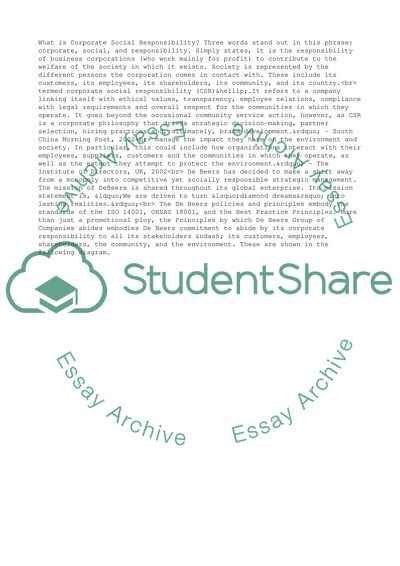Cite this document
(DeBeers Corporate Social Responsibility Research Paper, n.d.)
DeBeers Corporate Social Responsibility Research Paper. Retrieved from https://studentshare.org/business/1722631-how-debeers-has-responded-to-the-importance-of-social-responsibility-by-developing-and-implementing-socially-responsible-sustainable-strategies-and-practices
DeBeers Corporate Social Responsibility Research Paper. Retrieved from https://studentshare.org/business/1722631-how-debeers-has-responded-to-the-importance-of-social-responsibility-by-developing-and-implementing-socially-responsible-sustainable-strategies-and-practices
(DeBeers Corporate Social Responsibility Research Paper)
DeBeers Corporate Social Responsibility Research Paper. https://studentshare.org/business/1722631-how-debeers-has-responded-to-the-importance-of-social-responsibility-by-developing-and-implementing-socially-responsible-sustainable-strategies-and-practices.
DeBeers Corporate Social Responsibility Research Paper. https://studentshare.org/business/1722631-how-debeers-has-responded-to-the-importance-of-social-responsibility-by-developing-and-implementing-socially-responsible-sustainable-strategies-and-practices.
“DeBeers Corporate Social Responsibility Research Paper”, n.d. https://studentshare.org/business/1722631-how-debeers-has-responded-to-the-importance-of-social-responsibility-by-developing-and-implementing-socially-responsible-sustainable-strategies-and-practices.


